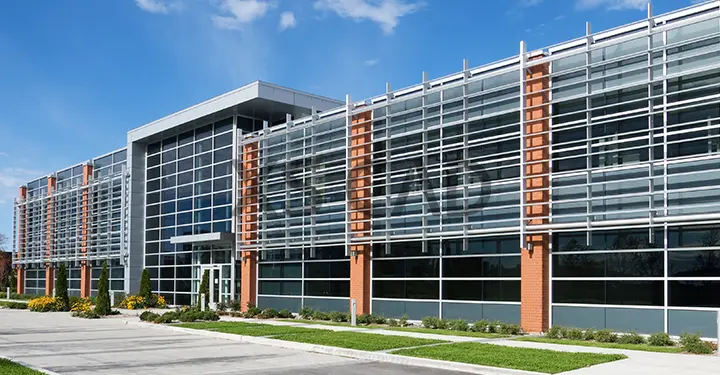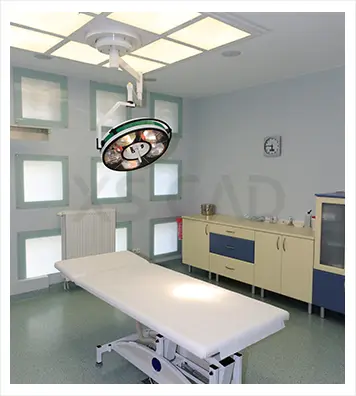Our Articles

Sustainable MEP Design Strategies for Green Hospital Buildings
Design is inherent in all that is created, but then, it’s much more. It is an amalgamation of functionality, aesthetics and popularity. And right now, sustainability is the buzz word, the cool kid on the block. Sustainable design is popular for all the right reasons and in all the right places, even hospitals. An eco-friendly, energy-efficient, green hospital showcases how to protect the environment while saving lives.
So, what does that entail?
The design and construction of sustainable healthcare institutes focuses on reducing carbon dioxide levels in hospitals while ensuring the safety of patients and medical staff. When more energy is consumed in a hospital, more toxic waste is released into the environment, resulting in potential hazards to human and other biological life forms.
Compared to other commercial buildings of the same size, hospitals use greater resources and generate more waste materials. According to studies, healthcare facilities in the US use more than 315 gallons of water per bed daily and consume 103.600 Btu of natural gas per square foot every year. Typically, 65% of a hospital’s energy consumption involves lighting, water heating and space heating or cooling.
Thus, it is vital that healthcare facilities adopt green design, sustainable concepts and measures to reduce environmental impact, save operational costs and improve energy efficiency. Sustainability design for hospitals will thus require a bouquet of quality sustainable MEP design, such as plumbing system design, mechanical engineering plumbing design and fire protection system design.
What are some of the green initiatives adopted for hospitals?
Constructing green hospitals necessitates the implementation of specific tools and processes for an eco-friendly and sustainable space, enabled by accurate mechanical 3D modelling services, thermal load calculation, duct design for HVAC systems and HVAC heat load calculations.
Hospital LEED Certification
Hospitals with Leadership in Energy and Environmental Design (LEED) certification ensure that they are adhering to green construction standards.
Green Hospital Construction Process
Key features in the construction of a green hospital include:

Sunny Days
Hospital rooms can be designed to receive sunshine from suitable directions, depending on site geography to heat rooms in cold countries and cool rooms in warm countries. This way, rooms can be kept at optimum temperatures in an energy-efficient manner, without additional cooling or heating systems. Large windows will allow sufficient light to enter the building and reduce the need for electric lights during the day. Sunlight will also promote healing ability and lift patient moods. Additional features, such as skylights, mirrors and courtyards will allow the entry of natural light into the building.
Green on Top
A green roof can be accommodated on hospital buildings, as they are typically large areas. Green roofs enable the exchange of carbon dioxide and oxygen, keep roofs cool and induce a sense of calm in visitors and patients. Implementing renewable energy sources, such as solar panels and geothermal systems, further enhances sustainability.
It’s Automatic!
Automation is another tool to help achieve sustainability and energy efficiency in a hospital facility. Well-planned systems can automate temperature control, air flow, electric lights and the water supply system. By sensing the time of day and people’s movements, an automated system can control the lighting inside, reducing power consumption and saving money.
Green Materials
Some types of green materials that can be used for hospital construction include:
Energy Savers
Green hospitals will have certain core energy systems to promote sustainability, such as:
Green Hospital Measures
Why Go Green?
In addition to addressing climate change and creating sustainable communities, green design and green measures can drive economic growth.
The World Green Building Council groups the benefits of green buildings into three aspects – environmental, economic and social benefits.
In Australia, building which received the “Green star certification” by the Green Building Council of Australia contributed to a 62% reduction in greenhouse gas emissions. Globally, green buildings, including hospitals, have the potential to save as much as 84 gigatons of carbon dioxide by 2050 .
Economic Benefits
Economic benefits include cost savings on utility bills, lower construction costs and increased property values, with a reputed 7 percent increase in asset value compared to traditional hospital buildings.
Green hospitals contribute to the social well-being of hospital staff, as workers in green buildings report a 101 percent improvement in cognitive skills. Further, well-ventilated rooms help medical staff improve their sleep cycles.
The primary goals of healthcare facilities are promoting improved medical care and reducing administrative costs. Using green building design initiatives to construct or renovate hospitals with the right design support is both a commendable and efficient strategy to benefit patients, staff, hospitals and the environment.
To know more about sustainable MEP design . . .
XS CAD has valuable experience providing mechanical 3D modelling services and sustainability design for general contractors and consultants. Our range of services for consultants and across the world include sustainable MEP design, thermal load calculations, HVAC heat load calculations, duct design for HVAC systems, plumbing system design, mechanical engineering plumbing design and fire protection system design, creating models and drawings by using Revit BIM, AutoCAD and BIM Collaborate Pro for cloud collaboration.

